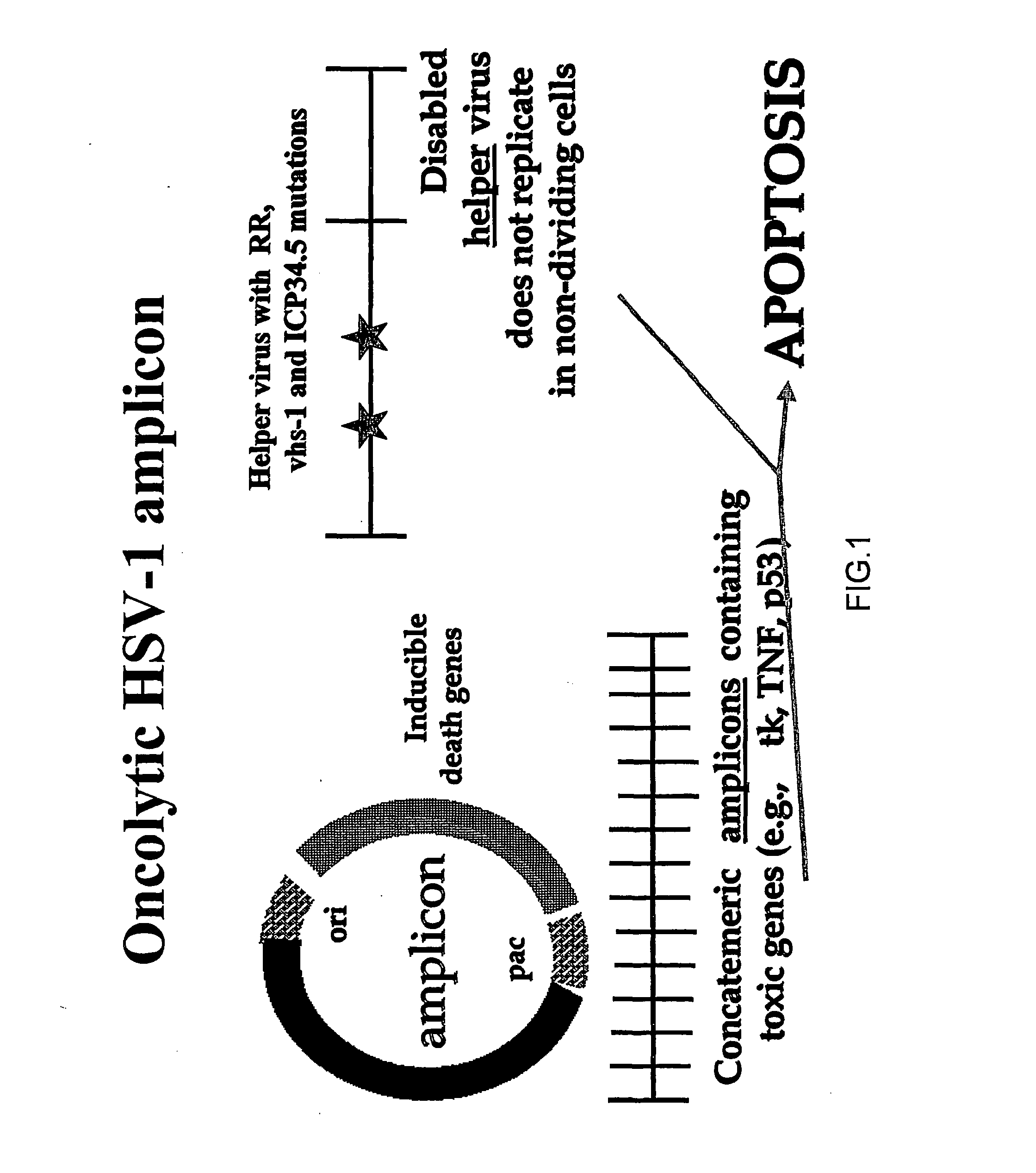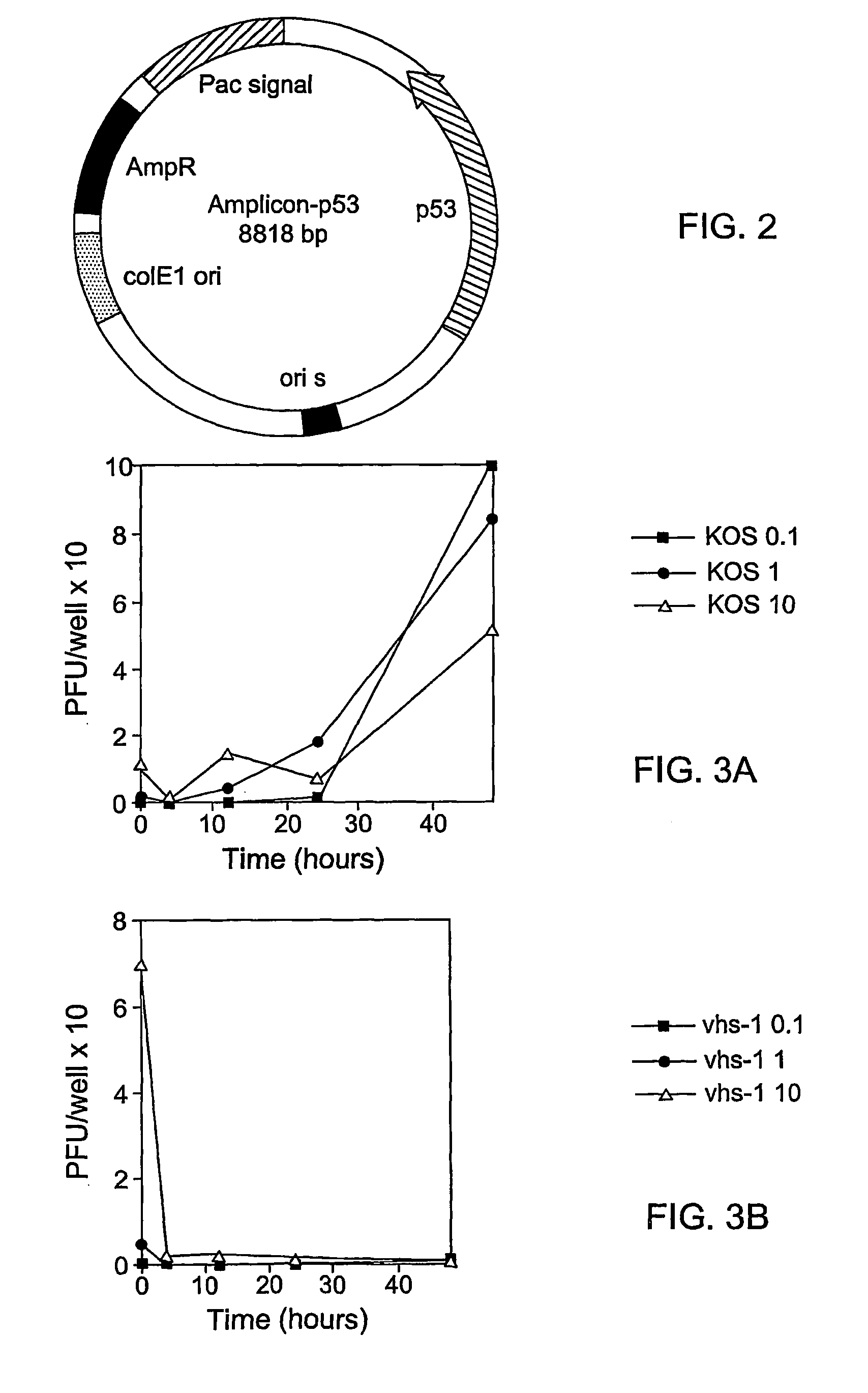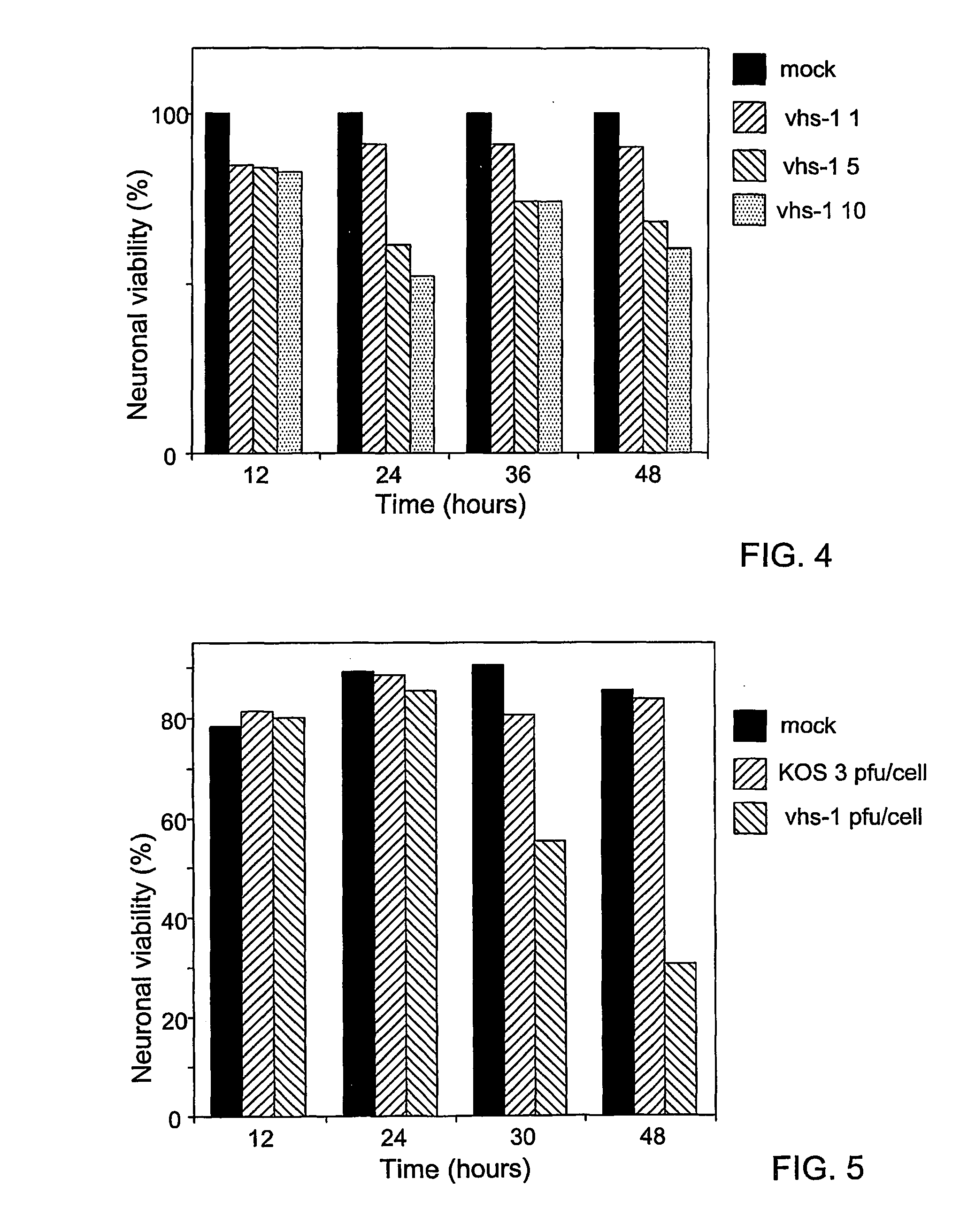Composite oncolytic herpes virus vectors
a technology vectors, applied in the field of herpes simplex virus (hsv) derived vectors, can solve the problems of poor prognosis of most gliomas, inability to completely treat gliomas, and inability to treat systemic tumors. , to achieve the effect of enhancing the immune system of the treated individual
- Summary
- Abstract
- Description
- Claims
- Application Information
AI Technical Summary
Benefits of technology
Problems solved by technology
Method used
Image
Examples
example 1
[0070] Materials and Methods
[0071] Cell cultures:--Primary cultures highly enriched for cerebellar granular neurons were prepared from 8 days old BALB-C mice. Cultures were made from mouse brains. The cells were trypsinized and plated on dishes coated with poly-L-lysine in standard medium (basal medium Eagle's, 10% fetal calf serum, 25 mM KCl, 2 mM glutamine, 50 .mu.g / ml gentamycin and 250 ng / ml amphotericine B supplemented with 1 mg / ml glucose. Cytosine-.beta.-arabinofuramoside (Ara-C) (10 .mu.M was added to the medium 18-22 h after plating to prevent replication of non neuronal cells.
[0072] Viruses:--HSV-1 (KOS) served as the wild type virus. The virion associated host shutoff mutant was derived in our laboratory from -1 (KOS) by general BudR mutagenesis and selection of mutants which did not shutoff host protein synthesis in the presence of actinomycin D to reassure that this is a virion function brought into the cells within the infecting virions (Read and Frenkel, 1983). Virus ...
example 2
[0091] Materials and Methods
[0092] H1299 human lung carcinoma cell line cells were infected with HSV-1 mutants (exemplified by vhs-1, .gamma.34.5 and the 34.5, vhs double mutant) at multiplicity of infection of 1 and 10 pfu / cell. In lung cells, the helper virus must carry a mutation which prevents its replication in order to be safe. The number of viable and dead cells were determined at 14, 24, 36, 48, 72 and 96 hours post infection by typan blue assay.
[0093] Trypan Blue Assay
[0094] The cells were incubated 1 min. in a solution containing 0.1% of trypan blue in phosphate buffer saline. Then 500 cells were counted by bright field microscope. Cells excluding the blue dye were counted as viable, whereas blue stained cells were scored as dead.
[0095] Results
[0096] The results are shown in FIGS. 7-9 and can be summarized as follows:
[0097] (1) Good expression of the p53 gene (in all the samples containing the amplicon) in the lung cells is shown in the Western Blot in the human lung carci...
example 3
[0106] HSV-1 amplicons containing the thymidine kinase (tk) gene were constructed. The amplicon is infected into various cells and tk gene expression in the in infected cells is evaluated by Western Blot analysis as described above.
[0107] In addition, gancyclovir induced death of the cells infected with the tk comprising amplicon alone or in combination with an HSV helper virus containing a mutated hvs gene is evaluated using the trypan blue or MTT assays as described above.
PUM
| Property | Measurement | Unit |
|---|---|---|
| Temperature | aaaaa | aaaaa |
| Composition | aaaaa | aaaaa |
| Cytotoxicity | aaaaa | aaaaa |
Abstract
Description
Claims
Application Information
 Login to View More
Login to View More - R&D
- Intellectual Property
- Life Sciences
- Materials
- Tech Scout
- Unparalleled Data Quality
- Higher Quality Content
- 60% Fewer Hallucinations
Browse by: Latest US Patents, China's latest patents, Technical Efficacy Thesaurus, Application Domain, Technology Topic, Popular Technical Reports.
© 2025 PatSnap. All rights reserved.Legal|Privacy policy|Modern Slavery Act Transparency Statement|Sitemap|About US| Contact US: help@patsnap.com



